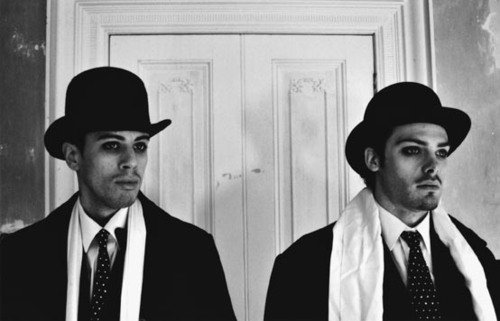David Austen
dal 9/2/2007 al 24/3/2007
Segnalato da
9/2/2007
David Austen
MK Gallery, Milton Keynes
The exhibition brings together a rich and significant body of work including the distinctive paintings and works on paper, for which he has become widely known, as well as a recently made film and hanging sculptures, both of which signal a new and important departure in the artist’s work.

Solo Exhibition
This exhibition is the largest and most comprehensive by British artist David Austen for over ten years. It brings together a rich and significant body of work including the distinctive paintings and works on paper, for which he has become widely known, as well as a recently made film and hanging sculptures, both of which signal a new and important departure in the artist’s work.
Central to the exhibition is the premiere of the film Crackers, commissioned by Milton Keynes Gallery and the Centre for Contemporary Visual Arts, University of Brighton, with the support of Arts Council England. Written and directed by Austen, the film is set within the confines of a single space, the Drawing Room of The Regency Town House in Hove, once home to a sea captain and now undergoing a lengthy process of renovation. Sparsely furnished, the room is host to two protagonists, Tin and Heart (actors Toby Kebbell and David Leon), who engage in an exchange that reveals a dark, complex narrative, interjected with black humour and sharp wit. Through the provocative and sometimes explicit nature of the language, Crackers resonates with many ideas that often resurface in Austen’s work - love, sex, death and the ache of human impulse and emotion in which love lies complicit with fear, comedy complicit with tragedy. There is no resolution to the story being told, only ambivalence, an uneasy rhythm and profound uncertainty, as Heart poignantly remarks, ‘We are adrift. We have left our moorings’.
The exhibition features a number of recent and new paintings including Glass, Tree and Hearts and the text-based Heart Snatcher and Black City. Here, the forcefulness of the statements - the clash of adjective and noun - reveal the distillation of image and text that takes place in Austen’s studio. The ‘deadness’ of the painting surface — as Austen often paints large expanse of his heavy flax canvas with small brushes — and the paint — almost dry, bleached, but seductive to the touch – creates an uncompromising surface.
Within Austen’s work, the landscape of text, repeated abstract patterns and graphic forms becomes a measure of time – from the months it may take to finish a canvas to the moments to create a watercolour of one of his tiny figures that can be seen in his installation of watercolours, Froth on a Daydream. In Darkland, the huge and evolving installation of hundreds of black ink drawings that fill an entire wall, the viewer may see the gestation of the source material that will figure in Austen’s future films. Much of the basis for the work is derived from observations of the everyday world that, removed from their original context, become invested with new meaning or take on different forms. For example, Austen’s recent sculptural works take the form of suspended mobiles constructed in painted plaster, cardboard, steel and wire. His use of everyday objects is thrown into sharp relief by the elegant balance of the sculpture itself.
Exhibition supported by Arts Council England Grants for the Arts, the Centre for Contemporary Visual Arts, University of Brighton, The Regency Town House, Hove, and MITES, a FACT service.
Gallery Talks and Events
Live Event
Wednesday 28 February, 6.30 – 8pm, £5 (£3)
Sally O’Reilly presents her radio play script from the David Austen catalogue as a live radio broadcast amongst the artist’s work.
In Conversation
Saturday 24 March, 2 - 3 pm, £5 (£3)
David Austen discusses his practice with Andrew Wilson, Curator (Modern and Contemporary British Art), Tate Britain, London.
Press Information
For further information and images, contact Giselle Richardson on 01908 558 302 or email g.richardson@mk-g.org.
Milton Keynes Gallery
900 Midsummer Boulevard - Milton Keynes



